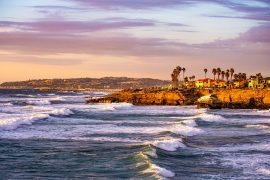Water damage can be a homeowner’s nightmare, leading to structural issues, health hazards, and costly repairs. One of the most insidious consequences of water damage is mold growth. We’ll explore this element of water damage restoration below.
Understanding Water Damage and Mold Growth
Before delving into the steps of mold prevention, it’s essential to understand the relationship between water damage and mold growth. Water damage creates the perfect environment for mold to thrive, as it provides moisture and nutrients necessary for mold spores to multiply. Mold can start growing within 24-48 hours of water damage occurrence, making swift action imperative to prevent its spread.
The Dangers of Mold Infestation
- Health Hazards: Mold exposure can cause respiratory issues, allergic reactions, and other health problems, particularly for individuals with compromised immune systems.
- Structural Damage: Prolonged mold infestation can weaken structures, compromising the integrity of buildings.
- Property Damage: Mold can damage furniture, textiles, and other belongings, leading to costly replacements.
- Reduced Property Value: Homes with a history of mold infestation may experience decreased resale value and difficulty in attracting buyers.
Steps in Professional Water Damage Restoration for Mold Prevention
Professionals follow a systematic approach to water damage restoration to mitigate damage and prevent mold growth effectively. Here are the essential steps involved:
1. Inspection and Assessment
The first step in water damage restoration is a thorough inspection of the affected area. Professionals assess the extent of water damage, identify potential sources of moisture, and determine the presence of mold. Advanced tools such as moisture meters and thermal imaging cameras help detect hidden water damage and moisture pockets.
2. Water Extraction
Prompt water extraction is crucial to prevent further damage and mold growth. Professionals use powerful pumps and extraction equipment to remove standing water from the premises. This step is followed by thorough drying using air movers and dehumidifiers to eliminate excess moisture.
3. Structural Drying and Dehumidification
Once standing water is removed, professionals focus on drying the structure and contents of the property. This involves strategic placement of air movers and dehumidifiers to accelerate the drying process. Moisture levels are monitored regularly to ensure complete drying and prevent mold proliferation.
4. Cleaning and Sanitization
All affected surfaces and belongings are thoroughly cleaned and sanitized to remove mold spores and prevent regrowth. Professionals use specialized cleaning agents and antimicrobial solutions to disinfect surfaces and inhibit mold growth. Carpeting, upholstery, and other porous materials may require deep cleaning or replacement, depending on the extent of contamination.
5. Restoration and Repairs
Once the property is thoroughly dried and sanitized, restoration work begins. This may involve repairing structural damage, replacing damaged materials, and restoring the property to its pre-loss condition. Professionals ensure that all repairs are completed to industry standards and in compliance with local regulations.
6. Mold Prevention Measures
In addition to remediation efforts, professionals implement proactive measures to prevent mold growth in the future. These may include:
- Ensuring Proper Ventilation: Adequate ventilation helps prevent moisture buildup, reducing the risk of mold growth in enclosed spaces such as bathrooms, kitchens, and basements.
- Repairing Plumbing Leaks: Prompt repair of plumbing leaks and fixtures prevents water intrusion and moisture accumulation, minimizing the risk of mold infestation.
- Sealing Cracks and Gaps: Sealing cracks and gaps in walls, floors, and foundations prevents water seepage and intrusion, reducing the likelihood of water damage and mold growth.
- Installing Moisture Barriers: Installing moisture barriers in crawl spaces and basements helps prevent moisture from permeating the structure, creating an inhospitable environment for mold.
7. Ongoing Maintenance and Monitoring
Regular maintenance and monitoring are essential to ensure long-term mold prevention. Homeowners are advised to inspect their properties regularly for signs of water damage, leaks, or moisture issues. Prompt action is key to addressing potential issues before they escalate into full-blown mold infestations.
FAQ: Addressing Common Concerns
Here are some frequently asked questions regarding mold prevention and water damage restoration:
Q: How can I tell if there’s mold in my home?
A: Mold is often accompanied by a musty odor and visible signs such as discoloration, water stains, or fuzzy growth on surfaces. If you suspect mold but can’t see it, professional mold testing may be necessary to assess the extent of contamination.
Q: Is bleach effective in killing mold?
A: While bleach can kill mold on non-porous surfaces, it is not effective on porous materials such as wood or drywall and may actually contribute to mold growth by adding moisture.
Q: Can I remove mold myself?
A: While minor mold issues can sometimes be addressed with DIY methods, extensive mold infestations require professional remediation to ensure thorough removal and prevent regrowth. Attempting to remove mold without proper training and equipment can pose health risks and may exacerbate the problem.
Q: How long does it take to dry out a water-damaged property?
A: The drying time depends on various factors such as the extent of water damage, humidity levels, and airflow. In general, it can take anywhere from a few days to several weeks to fully dry out a water-damaged property. Professionals use moisture meters and monitoring equipment to assess drying progress accurately.
Q: Will my homeowner’s insurance cover water damage and mold remediation?
A: It depends on the specifics of your insurance policy and the cause of the water damage. Most standard homeowner’s insurance policies cover water damage caused by sudden and accidental events, such as burst pipes or appliance leaks. However, coverage for mold remediation may vary, so it’s important to review your policy and consult with your insurance provider.
Conclusion
Water damage restoration is a complex process that requires professional expertise and attention to detail. By following the essential steps outlined in this guide, professionals can effectively mitigate water damage and prevent mold growth, safeguarding both property and occupants’ health.





